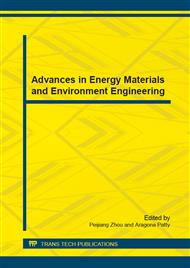p.426
p.431
p.437
p.442
p.447
p.451
p.455
p.460
p.466
Design and Implementation of Chemical Wastewater pH Control System
Abstract:
pH parameter is one of the main factors influencing organic degradation in the sewage treatment, and the degradation of organic matter in biochemical treatment unit is the largest, the hydrolysis acidification processing unit is the second largest. When the water pH range of biochemical treatment unit is [6.8 7.2], organic degradation is in the largest degree. The pH range of neutralization unit must be based on a subsequent hydrolysis acidification treatment unit, in order to adjust the pH range dynamically. Finally we make wastewater treated by biochemical unit meet the pH standard, and make the organic matter degrade in the largest degree. We designed chemical wastewater pH intelligent control device based on MSP430F149 MCU. The application of this device shows that the method has high control accuracy, less drug consumption and has large organic matter degradation in the sewage treatment plant, etc.
Info:
Periodical:
Pages:
447-450
Citation:
Online since:
December 2014
Authors:
Keywords:
Price:
Сopyright:
© 2015 Trans Tech Publications Ltd. All Rights Reserved
Share:
Citation:


